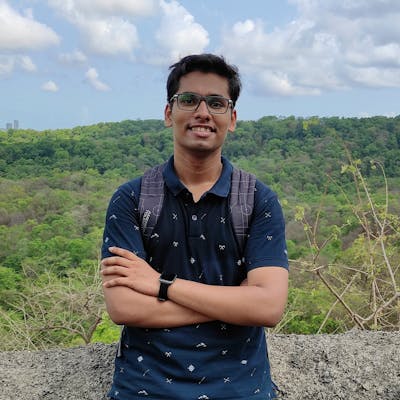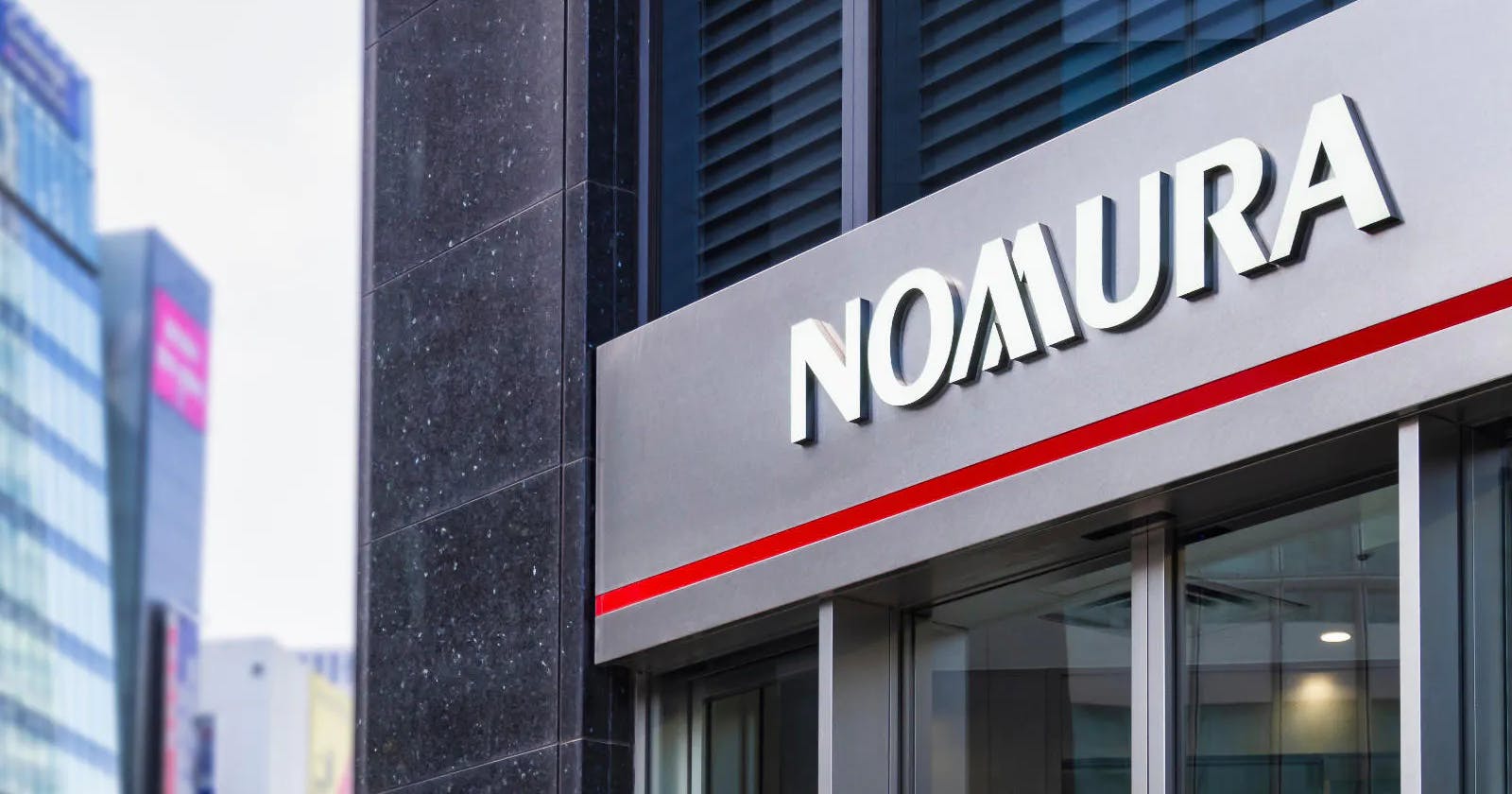Landing My First Job at Nomura
Campus Placement Experience of getting my first job offer
Given the amount of competition, getting your first job as an engineering student in India can be difficult. And it has become even more difficult during the current recession as companies have reduced their hiring numbers. Various companies visit the campuses of many universities and institutions in India's major cities to hire students. Nomura was one such company in my institute.
About Me
Hi, I'm Sarvesh Patil. I am Full Stack Web Developer and ML Enthusiast. I love to learn new technologies and listen to tech podcasts. I'm an Engineering student from Mumbai, India, and have been working on various Web Development and ML technologies for the last few years.
About Nomura
Nomura operates as a global financial services conglomerate, with a network that spans more than 30 countries and regions. Through its three business segments Retail, Investment Management, and Wholesale (Global Markets and Investment Banking), the organization caters to the needs of individuals, institutions, corporations, and governments in both the Eastern and Western hemispheres.
Company Website: https://www.nomura.com/
Eligibility Criteria
Branches Eligible are BE (CMPN, INFT, EXTC, ETRX, AIDS) and MCA
As such no other criteria were mentioned
Timeline
22 May 2023: Launch of competition
23 May 2023: Online Registrations open
10 June 2023: Submission of “Executive Summary” & Registration closure
19 June 2023: “Executive Summary” shortlist communication
22 – 26 June 2023: First round presentation of “Executive Summary”
28 June 2023: Communication of finalist shortlists
11 & 12 July 2023: Grand Finale
14 July 2023: Results for full-time offers
Compensation Breakdown

Note: As Nomura is a dream company, it blocked the selected students hence they were out of the placement process and cannot go for higher studies for the Academic year 2024-2025.
Round 0 - Team Formation
We were required to form two-person teams (inter-class is permitted) and register on the company's website with a team name. So, form the team wisely, as it will have a significant impact later in the process.
Round 1 - Executive Summary Submission
The Executive Summary submission round was the first and one of the most difficult rounds of the competition. In this round, only 16 teams were chosen from a pool of over 50. Many students did not apply because the problem statement was unusual and difficult to comprehend.
The following is a link to our Executive Summary:
Executive Summary
The Executive Summary must be no more than two pages long. It should include a brief summary of how well you understood the problem statement and your solution to the problem. To get through this round, your idea should be innovative. If you come up with any new ideas for features that aren't mentioned in the problem statement but are relevant to the problem, you can include them in the Executive Summary. Because all of the students will be working on the same problem statement, try to come up with a unique idea that will set you apart from the crowd. Make a flowchart that accurately represents how your application will look while remaining simple and easy to understand.
Following is the problem statement for Nomura KakushIN 7.0
Round 2 - Executive Summary Presentation
The round 1 shortlisted students were asked to present their solutions in front of the Nomura Panel at the college itself. The presentation lasted about 15 minutes, followed by a Q&A session. You must have a complete understanding of your solution before presenting. Keep no loose ends because you may be grilled on them. Consider all of the possible outcomes when preparing your presentations. This round will be entirely technical, with questions such as "What tech stack will you use?" and "Why have you chosen this tech stack?" If your solution lags behind, they will point it out, and you will have to persuade them that you will include it in the solution. Additionally, try to persuade them that you will be able to complete the entire solution during the hackathon. They will ask you about your technical experience, so make sure you tell them about all of your internships and projects in detail, and if you have any previous hackathon experience, that would be a plus. Eight teams were chosen for the final round.
The following is a link to our round 2 presentation:
Round 3 - Hackathon
The actual Hackathon has to be the best thing about KakushIN. Before participating in the Hackathon, you must provide your tech stack, which includes what tools, libraries, and APIs languages you will be using on the day of the hackathon. You visit their office once before the hackathon to ensure that everything is properly configured on your system. You will connect to their AWS machines via RDP (Remote Desktop). Inform them if anything is missing. Nomura picked us up from college and dropped us off at our homes. KakushIN is a hackathon that lasts two days. You code for 10 hours on day one and only 30 minutes on day two to set up your system to demo to the panelists.
Things to keep in mind: Github is blocked, Drive is blocked, and URL tracking is active. Do not copy codes from websites; the phone can only be used for calling; Stack Overflow is permitted; official documentation is permitted; and ChatGPT is prohibited. Git is available for collaboration, and your Git repositories have been deployed on AWS.
We have mentors visiting us on day one to check on our progress and plan. Volunteers are constantly present in the room. You will be working in a lab rather than in open space. The first day's schedule is from 9:30 a.m. to 7:30 p.m. Then you'll be driven home, and the next day's pickup is scheduled for early morning, as your reporting time is 8 a.m.
On day 2, you code for 30 minutes and prepare your systems for the demo. The demo presentation must be completed in 10 minutes. You must demonstrate whatever you have created. There will be some Q&A. Finally, the judging is completed. Then you have the results. First Prize: A MacBook Air, Second Prize: an iPad Mini, Third Prize: GoPro. Following the results, they informed us that approximately 15 to 20 PPOs were offered, and the selected students were notified by the college two days later on July 14th, and I was one of them. Despite the fact that my team did not place in the top three, I received a job offer. Three students were selected from our college: two from CMPN and one from INFT. If you are good at development and soft skills, this is the best opportunity to get into a Dream Company.
Tips
Wear blazers during rounds 2 and 3 and behave formally.
Interact with your mentors during the hackathon, discuss your project confidently, and try to make a good impression to increase your chances of being selected.
Don't rely on KakushIN for placements because selection is based on many factors such as your technical skills, communication skills, and luck. Prepare for other companies while treating KakushIN as a competition only.
Participate in hackathons beforehand to gain valuable experience that you can learn from and apply on the big stage. If you win, you can also discuss them with the mentors and judges during rounds 2 and 3.
Resources
Resources that I used and recommend:
Web Dev (HTML, CSS, Bootstrap, Node.js, Express.js, MongoDB): https://www.udemy.com/course/the-web-developer-bootcamp/
React.js: https://scrimba.com/learn/learnreact
C++: https://www.udemy.com/course/beginning-c-plus-plus-programming/
DSA from beginner to advanced: https://takeuforward.org/strivers-a2z-dsa-course/strivers-a2z-dsa-course-sheet-2/

